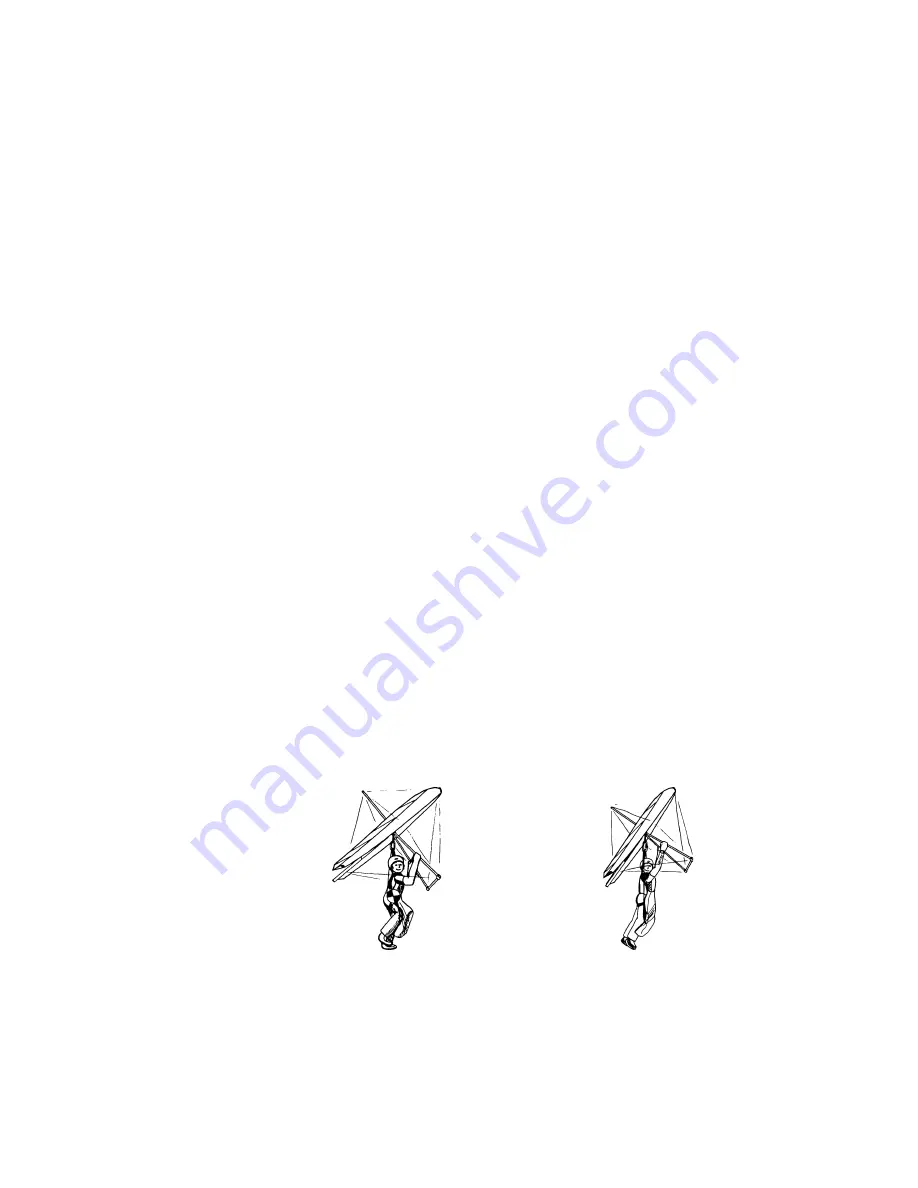
— 31 —
put a foot down, and step onto the ground. In lighter winds, you will want to use some combination of
a final nose up flare, and running out your landing, in order to finish the flight on your feet with the
glider settling on your shoulders. The lighter the wind, the stronger should be both your flare and your
run.
The traditional method of landing in light or no wind calls for a sharp, aggressive flare at precisely the
correct moment. This technique works fine when done correctly, but it’s not easy to get the timing just
right. Flare too early and you will climb, and then fall with the nose pitching down. Flare too late and
you won’t get the nose up enough to stop your forward motion, and the glider may nose into the
ground as you run into it from behind.
The flare timing process is made much easier by using a combination of a “crescendo flare” and a run
out of the landing. As you bleed off speed on final, flying just above the ground, you are at first letting
the control bar out towards its trim position. As the glider reaches trim speed, which will normally be
one to three mph above stall speed, you begin to gently push the bar out to keep the glider from
settling. At this point it is almost time to flare. As the glider enters the “mushing” range of angles of
attack, it will begin to settle in spite of your continuing to ease the bar out. This should be happening
well before your arms are significantly extended. At this point begin your flare by smoothly accelerat-
ing the rate at which you push out on the bar. At the same time, draw one leg forward, put a foot
down, and start to run as hard as you can. This run should be very much like an aggressive take off
run – your body should be leaning forward into the run and you should be driving with your legs. The
difference here is that while you are leaning into your run and driving forward with your legs, your
arms are extending fully from your shoulders, pushing out, and what feels like upwards, on the control
bar in an accelerating, “crescendo” flare.
Done correctly, this type of flare / run combination will bring the glider quickly to a very nose high
attitude, producing a great deal of drag and quickly arresting all of your forward motion. You will feel
the glider pulling you from behind, resisting your attempt to run, and as you slow down the glider will
settle gently on your shoulders. Even in no wind, you should not have to take more than a few steps. If
your timing is a little early, and you feel the glider start to climb, simply stop pushing out and resume
the flare when the glider again begins to settle. If your timing is a little late, your feet will touch down a
little sooner, but as long as you’re running and flaring at the same time, the glider will stay over your
head or behind you.
Note: Pilots who have trouble with the flare, and with the glider nosing over during landing, usually do
so because of one of the following problems:
a. Harness leg straps too long / hanging too low below the glider, and / or hands too low on the
control bar. This reduces pitch authority and prevents an adequate flare.
Summary of Contents for Sport 2 155
Page 1: ...Sport 2 155 Owner Service Manual June 1st 2004 First Edition...
Page 2: ......
Page 6: ......















































